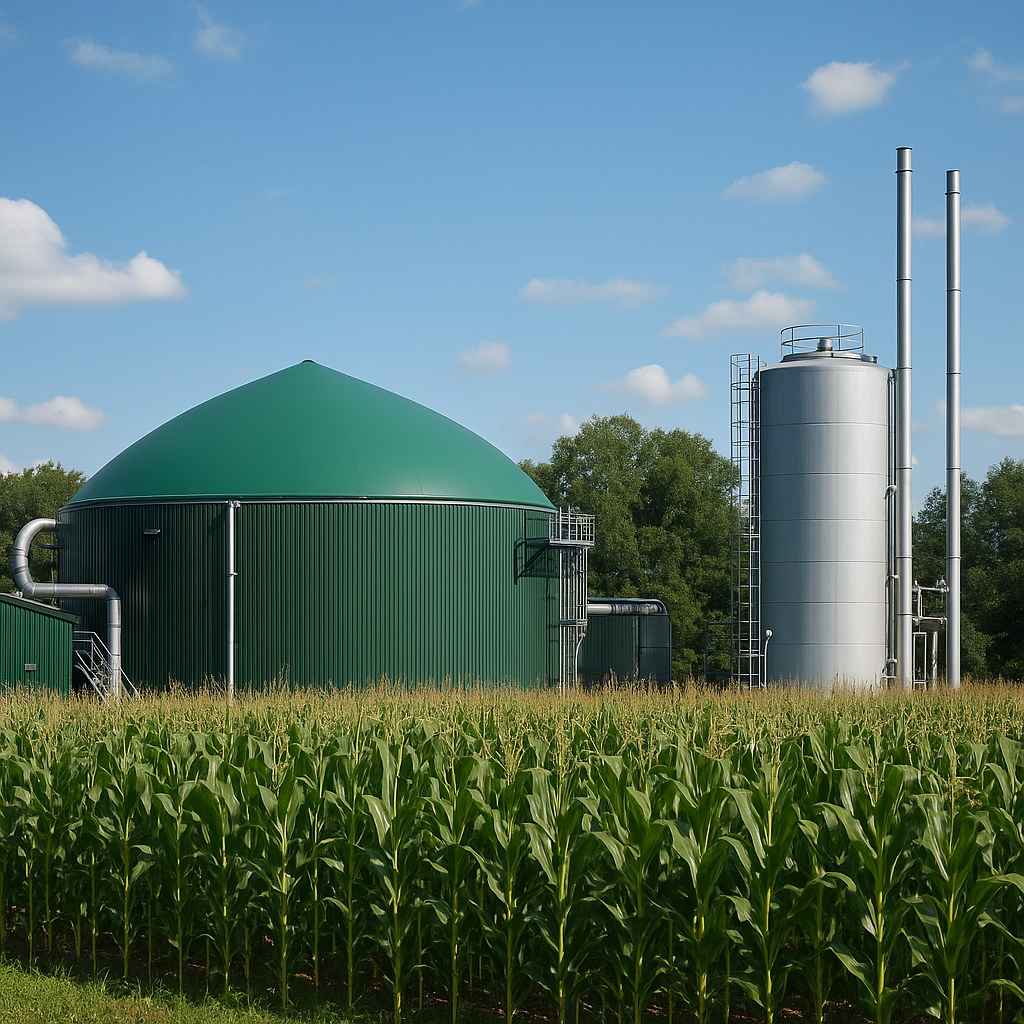Biogas breakthrough could transform global waste into fuel goldmine
esearchers found that certain archaeal and bacterial communities adapted well to saline environments, maintaining digestion activity and methane production despite harsh conditions. These findings open the door to more flexible feedstock use, including high-salt substrates previously considered unsuitable for biogas generation.

A comprehensive editorial published in Applied Sciences consolidates cutting-edge research on the production, treatment, and future uses of biogas, reinforcing its potential as a cornerstone of sustainable energy infrastructure. As the global economy transitions away from fossil fuels, biogas stands out for its adaptability, scalability, and alignment with waste-to-energy principles.
Titled “Special Issue on Production, Treatment, Utilization, and Future Opportunities of Biogas”, this special issue by Carlos Rico of Universidad de Cantabria curates ten contributions, eight original research articles and two review studies, that collectively explore anaerobic digestion, process enhancements, application innovations, and biogas's role in a circular economy. With more than 100 billion tons of organic waste produced globally each year, the insights underscore the urgency of repositioning waste as a resource and biogas as a central player in global energy transitions.
How are new technologies enhancing biogas production?
The issue primarily focuses on improving anaerobic digestion (AD), the biological process through which organic matter is broken down to generate biogas. Several studies target efficiency gains through technological innovation. One research group investigated the use of conductive materials and integrated bioelectrochemical systems (BES), finding that these enhancements promoted diverse electron transfer mechanisms and increased methane yields by up to 10%, even under conditions of high organic loading.
Another study examined microbial resilience to high salinity, a common challenge in AD of industrial and agricultural waste. Researchers found that certain archaeal and bacterial communities adapted well to saline environments, maintaining digestion activity and methane production despite harsh conditions. These findings open the door to more flexible feedstock use, including high-salt substrates previously considered unsuitable for biogas generation.
In a separate contribution, a novel hybrid anaerobic labyrinth-flow bioreactor was tested on dairy wastewater. This pilot-scale system was designed to maximize contact time and optimize degradation kinetics. Results showed marked improvements in both biogas volume and the stability of the digestion process, offering a scalable model for industrial wastewater treatment.
Two further studies analyzed thermal and physical pre-treatment techniques for high-load poultry slaughterhouse wastewater. One evaluated electromagnetic microwave heating and found that it significantly enhanced biodegradation and biogas yield. The other integrated ultrasonic disintegration with heating, which increased the proportion of dissolved organic matter, accelerated digestion kinetics, and resulted in higher methane content. These methods represent critical advances for treating complex, high-strength waste streams while improving energy recovery.
What new applications are emerging for biogas utilization?
Beyond production, several papers explored value-added uses of biogas, emphasizing its flexibility and alignment with decarbonization goals. One standout study investigated plasma-assisted chemical conversion, using a dielectric barrier discharge reactor and metal-oxide catalysts (Ni/Al₂O₃, Fe/Al₂O₃, Ni-Fe/Al₂O₃). This approach enables the transformation of raw biogas into liquid chemical products, expanding the economic and industrial relevance of the energy source.
Another application involved using biogas derived from crop residues, including quinoa and wheat, as fuel for a medium-scale gas turbine designed for electricity generation. Tested in the Andean region, the study demonstrated the viability of biogas in off-grid and rural electrification projects, especially in areas with substantial agricultural waste.
In a separate contribution, researchers examined the use of microalgae-based systems to remove CO₂ from biogas in open photobioreactors. By biologically upgrading raw biogas, this method not only improves methane content but also offers a low-energy alternative to conventional chemical scrubbing techniques.
These innovations highlight biogas’s versatility, proving that it can transition from a niche renewable fuel into a cornerstone of integrated energy systems. Whether through direct combustion, chemical conversion, or gas-to-liquid processes, biogas is rapidly gaining traction as a low-carbon substitute for fossil-based energy sources across multiple sectors.
How does biogas align with circular economy and sustainability goals?
Two review articles included in the special issue provide strategic insights into biogas’s broader role in circular economy frameworks. One focuses on the environmental benefits of biogas and biomethane derived from diverse organic wastes, underscoring their ability to close material loops, reduce landfill use, and curb greenhouse gas emissions. It also evaluates integration scenarios in electricity, heating, and transportation sectors, making the case for biogas as a renewable and dispatchable energy source.
The second review examines the use of anaerobic membrane bioreactors (AnMBRs) in municipal and domestic wastewater treatment. These systems, combining biological digestion with membrane filtration, offer enhanced biogas recovery and minimize fouling, a key limitation in traditional reactors. The paper highlights emerging fouling mitigation strategies, such as periodic backflushing and tailored membrane materials, aimed at scaling AnMBR adoption globally.
Put together, these reviews reflect a paradigm shift in how energy and waste are managed. By valorizing organic residues, ranging from household scraps to slaughterhouse effluent, biogas supports climate resilience, reduces dependence on fossil fuels, and promotes localized energy independence.
In a nutshell, this special issue reflects a clear message: the future of energy is not just renewable - it’s recoverable, adaptable, and rooted in the sustainable treatment of today’s waste.
- FIRST PUBLISHED IN:
- Devdiscourse










